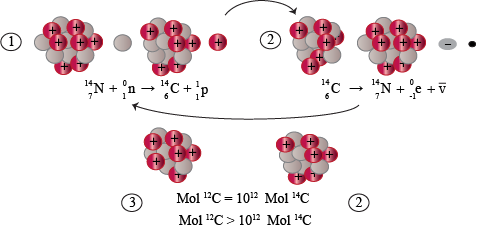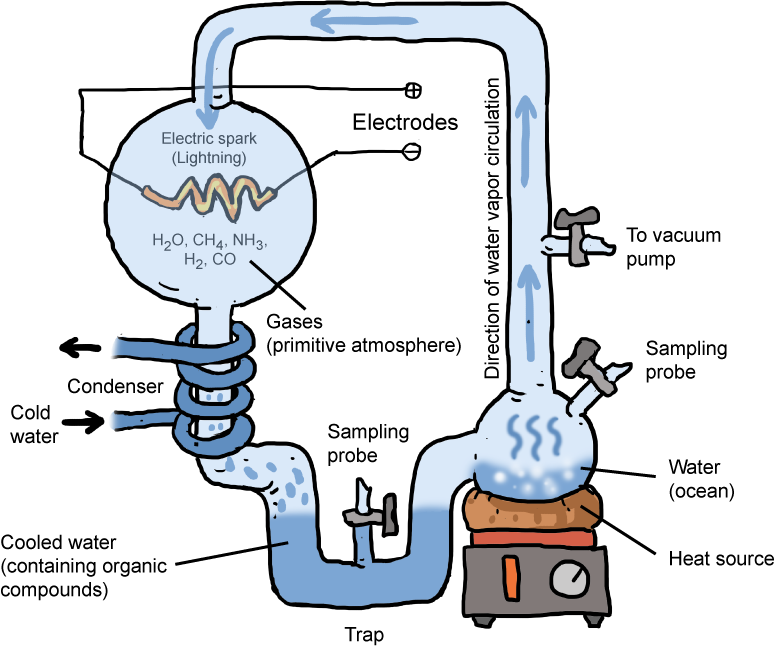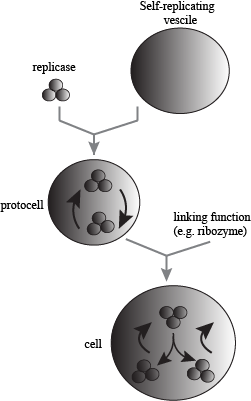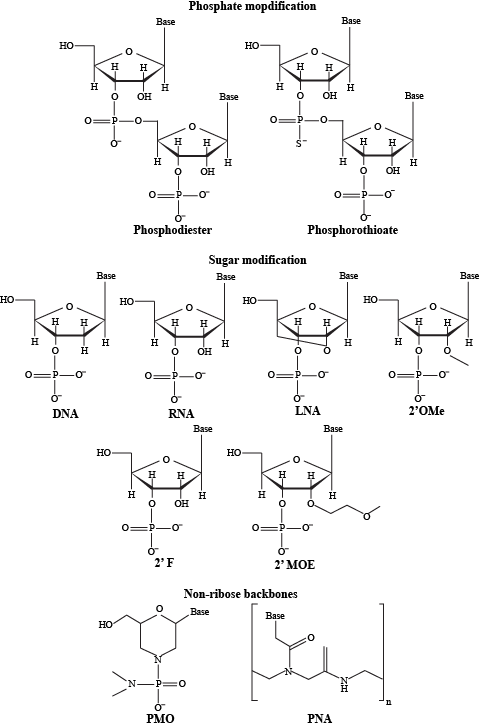The Origin of Life
All living creatures are composed of organic matter ("organic" in the sense that it is made of carbon, not the "organic" that is 35% more expensive at the grocery store), and the origins of life on Earth is really a question of where did organic molecules come from? The prevailing theory is that all life on Earth originated from a universal common ancestor (LUCA). Be sure not to confuse LUCA with Luka, your neighbor on the second floor with some problems. There are several theories of how LUCA came to exist, which can be split up based upon the origins of organic molecules:

Formation of Carbon-14 and Decay of C-14
Carbon dating measures the presence of a radioisotope of carbon, carbon-14, in a substance. Plants convert atmospheric carbon dioxide during photosynthesis for energy. A small fraction of atmospheric carbon is radioactive carbon-14, caused by radiation from the sun. Plants, and animals that eat plants (or animals that eat animals that eat plants, or animals that eat animals that eat animals that eat plants, or… you get the idea), have a fraction of all carbon in their body composed of carbon-14 while they are alive.
However, when the plant or animal dies, the carbon-14 decays over time into carbon-12. Where did carbon-13 go? We'll never tell…but it rhymes with "CIA kidnapping plot." We can measure how old something is based upon the amount of carbon-14 in its body (or fossil). One of Shmoop's favorite "Yo Mamma" jokes is:
Yo mamma so old, she's 0.5 parts per million carbon-14!
Admittedly, it only insults a handful of scientists, but boy do they feel zinged. And they deserve it.
While carbon dating is a useful tool to roughly determine how old a fossil is, it is only useful to determine the age of something up to 60,000 years ago. Also, there is a lot of error in the dating process due to differences in exposure to radioactive carbon over time. It is difficult to ID how old something is, as something that was 50,000 years old could be anywhere from 48,000-52,000 years old. This is why fossils always get away with illegally buying lottery tickets.
It is unlikely that an organism as complex as a prokaryote could survive in space and entry into the Earth's atmosphere. However, there is some evidence arguing that organic matter on Earth could have originated from an extraterrestrial source, including:

Miller-Urey Experiment
They designed a series of tubes and flasks containing water, hydrogen, methane, and ammonia gas, which were likely to be present on early Earth. In their experiment, the water and gases passed through an electrical charge. The energy from the charge caused various amino acids and some nucleic acids to form. It also drove their electric bill through the roof.
This experiment was groundbreaking because it proved for the first time a mechanism by which life on Earth could originate from just chemicals. We started to know where life came from, and finally storks could go back to being a pointless bird. While we are still uncertain what the early composition of gases was in Earth's atmosphere at the time, different mixtures of gases could theoretically lead to production of all forms of life as we now know it. Although they seem similar, the method for making early biomolecules in the Miller-Urey experiment had nothing to do with the invention of microwaveable Cup O' Noodles, which is soup—just not the primordial kind.
You're probably thinking: "What's the big deal? I can make biomolecules all the time. How did we get LIFE?" That is a sassy but fair point. There are several theories on how early life originated, all of which involved the creation of self-replicating proto-cells.

Self-replicating proto-cell
What's in a self-replicating proto-cell? Basically, it is nucleic acids capable of self-replicating surrounded by a lipid membrane that grows and divides. If you're a student of cell biology, you're probably getting wedgied as you read this, but you'll also remember that proteins are necessary for replicating DNA. A proto-cell most likely didn't have any proteins to do this, so it needed a nucleic acid genome that could replicate itself. How is this possible? Gnomes. Just kidding—or are we?
One possibility came from the discovery of ribozymes, RNA polymers that are like enzymes and can catalyze chemical reactions. Many people have proposed that RNA molecules encoding a sequence of nucleic acids that can catalyze their own replication could be the source of proto-cell genomes. This is called the RNA World hypothesis. Coincidentally, RNA World is the worst amusement park in America.

Alternative nucleic acid precursors
For years, nobody could find a self-replicating RNA enzyme, so it was proposed that there was a nucleic acid precursor that gave rise to RNA and DNA. Precursor molecules likely had a different backbone than ribose to form polymers. These include:
The self-replicating RNA likely evolved to improve efficiency of replication, and perhaps develop metabolic functions linking vesicle growth and division. Ribozymes capable for this activity have not been found in nature or created in a lab, so researchers proposed another way of regulating vesicle growth and division: clay.
You're probably thinking: "Clay? You mean the stuff I make pots out of?" Well, not really the same clay, but a specific type of clay called montmorillonite (let's just call it Mr. M. Clay for short). This clay has been shown to help lipid molecules form vesicles, and promote nucleotide addition into RNA polymers. Basically, it can catalyze two essential functions for the formation of proto-cells, so the name of this theory is Clay Catalysis. Clay's got all the answers (yay, Mr. M. Clay).
While the prevailing theory of the origin of life on Earth is the RNA World hypothesis, there are many other theories. Our favorite theory is that all of this is a dream, and this sentence is a clue to remind you to wake up. It's probably likely that many factors are involved in leading to the formation of life on Earth. The reason for this is that there are many contradictions for the origins of biomolecules. These include:

What Pasteur did was boil a meat broth and leave it out for several days, and observe no growth. He then tilted the flask and showed that the culture would grow shortly thereafter. This proved that life did not come from nothing, but in fact grew from exposure to particles in the air. This experiment proved the existence of "germs," and is why Louis Pasteur is the father of the field of microbiology.
- Extra-terrestrial: Organic molecules came from a comet or meteorite that had organic matter on it already. Where did that organic matter come from? Probably from this.
- Terrestrial: Organic molecules were formed through chemical reactions that occurred in the early Earth.

Formation of Carbon-14 and Decay of C-14
Carbon dating measures the presence of a radioisotope of carbon, carbon-14, in a substance. Plants convert atmospheric carbon dioxide during photosynthesis for energy. A small fraction of atmospheric carbon is radioactive carbon-14, caused by radiation from the sun. Plants, and animals that eat plants (or animals that eat animals that eat plants, or animals that eat animals that eat animals that eat plants, or… you get the idea), have a fraction of all carbon in their body composed of carbon-14 while they are alive.
However, when the plant or animal dies, the carbon-14 decays over time into carbon-12. Where did carbon-13 go? We'll never tell…but it rhymes with "CIA kidnapping plot." We can measure how old something is based upon the amount of carbon-14 in its body (or fossil). One of Shmoop's favorite "Yo Mamma" jokes is:
Yo mamma so old, she's 0.5 parts per million carbon-14!
Admittedly, it only insults a handful of scientists, but boy do they feel zinged. And they deserve it.
While carbon dating is a useful tool to roughly determine how old a fossil is, it is only useful to determine the age of something up to 60,000 years ago. Also, there is a lot of error in the dating process due to differences in exposure to radioactive carbon over time. It is difficult to ID how old something is, as something that was 50,000 years old could be anywhere from 48,000-52,000 years old. This is why fossils always get away with illegally buying lottery tickets.
Extraterrestrial Life
The theory that life originated from an extraterrestrial source is called panspermia. It's a theory supported by many scientists, not all of which wear tin foil hats. It's a very convenient theory to argue that life on earth originated from a meteorite, comet, or other space rock landing and bringing life to Earth. While that explains the origins of the Transformers, it's not really enough to explain the origins of life.It is unlikely that an organism as complex as a prokaryote could survive in space and entry into the Earth's atmosphere. However, there is some evidence arguing that organic matter on Earth could have originated from an extraterrestrial source, including:
- Organic compounds are relatively common in space.
- Comets contain "dark material" filled with complex organic material such as coal.
- A frozen mixture mimicking an extraterrestrial environment will produce self-organizing "bubbles" that could be precursors to cellular life.
- Uracil, an RNA component, likely formed extraterrestrially.
- The popularity of the Transformers movies.
Terrestrial Origins of Life
In 1924, Soviet scientist Alexander Oparin proposed the "primordial soup" model for the origins of life on Earth. No, primordial soup is not the disgusting moldy chili in the Shmoop office refrigerator. Frank just forgets to throw his stuff away. While Louis Pasteur confirmed (see Brain Snack at end of section) that life does not arise from nothing (abiogenesis), there might have been one origination of life from nothing. Oparin argued that atmospheric oxygen (O2) blocks chemical reactions that form organic compounds necessary for life, which is why we don't have any more abiogenesis. Oparin's primeval soup recipe was:- Organic molecules form in O2-free environment from solar radiation.
- These molecules become more complex until they form coacervate droplets (self-contained organic complexes, or proto-cells).
- Coacervates grow by fusion with other coacervates.
- Coacervates spontaneously divide to produce "daughter" particles.
- Coacervates may produce molecules that promote proto-cell integrity. This would be the earliest form of metabolism.
- Chicken broth, celery, and carrots.

Miller-Urey Experiment
They designed a series of tubes and flasks containing water, hydrogen, methane, and ammonia gas, which were likely to be present on early Earth. In their experiment, the water and gases passed through an electrical charge. The energy from the charge caused various amino acids and some nucleic acids to form. It also drove their electric bill through the roof.
This experiment was groundbreaking because it proved for the first time a mechanism by which life on Earth could originate from just chemicals. We started to know where life came from, and finally storks could go back to being a pointless bird. While we are still uncertain what the early composition of gases was in Earth's atmosphere at the time, different mixtures of gases could theoretically lead to production of all forms of life as we now know it. Although they seem similar, the method for making early biomolecules in the Miller-Urey experiment had nothing to do with the invention of microwaveable Cup O' Noodles, which is soup—just not the primordial kind.
You're probably thinking: "What's the big deal? I can make biomolecules all the time. How did we get LIFE?" That is a sassy but fair point. There are several theories on how early life originated, all of which involved the creation of self-replicating proto-cells.

Self-replicating proto-cell
What's in a self-replicating proto-cell? Basically, it is nucleic acids capable of self-replicating surrounded by a lipid membrane that grows and divides. If you're a student of cell biology, you're probably getting wedgied as you read this, but you'll also remember that proteins are necessary for replicating DNA. A proto-cell most likely didn't have any proteins to do this, so it needed a nucleic acid genome that could replicate itself. How is this possible? Gnomes. Just kidding—or are we?
One possibility came from the discovery of ribozymes, RNA polymers that are like enzymes and can catalyze chemical reactions. Many people have proposed that RNA molecules encoding a sequence of nucleic acids that can catalyze their own replication could be the source of proto-cell genomes. This is called the RNA World hypothesis. Coincidentally, RNA World is the worst amusement park in America.

Alternative nucleic acid precursors
For years, nobody could find a self-replicating RNA enzyme, so it was proposed that there was a nucleic acid precursor that gave rise to RNA and DNA. Precursor molecules likely had a different backbone than ribose to form polymers. These include:
- PNA – peptide nucleic acid, backbone is N-(2-aminoethyl)-glycine.
- TNA – threose nucleic acid, backbone is threose
- GNA – glycol nucleic acid, backbone is glycol
The self-replicating RNA likely evolved to improve efficiency of replication, and perhaps develop metabolic functions linking vesicle growth and division. Ribozymes capable for this activity have not been found in nature or created in a lab, so researchers proposed another way of regulating vesicle growth and division: clay.
You're probably thinking: "Clay? You mean the stuff I make pots out of?" Well, not really the same clay, but a specific type of clay called montmorillonite (let's just call it Mr. M. Clay for short). This clay has been shown to help lipid molecules form vesicles, and promote nucleotide addition into RNA polymers. Basically, it can catalyze two essential functions for the formation of proto-cells, so the name of this theory is Clay Catalysis. Clay's got all the answers (yay, Mr. M. Clay).
While the prevailing theory of the origin of life on Earth is the RNA World hypothesis, there are many other theories. Our favorite theory is that all of this is a dream, and this sentence is a clue to remind you to wake up. It's probably likely that many factors are involved in leading to the formation of life on Earth. The reason for this is that there are many contradictions for the origins of biomolecules. These include:
- The temperature of the early Earth was believed to be 100 °C, but many biomolecules can only be synthetically formed under freezing conditions.
- Collision from meteorites of the early Earth would likely have vaporized the early oceans that served as the "soup," killing off whatever life could have formed.
- We suppose that these chemical reactions occur over millions of years, but over this time-period, most biomolecules should be broken down at a greater rate than they would be made.
- Seriously, it's a dream. Wake up.
- Energy from the sun or deep-sea vents formed some biomolecules.
- Some biomolecules might have been formed in space.
- Meteorites hitting the earth mixed biomolecules giving rise to a primordial soup mixture.
- This soup eventually formed proto-cells.
- These proto-cells evolved into cellular life.
- Some proto-cells became the cast of the Jersey Shore.
Brain Snack
Louis Pasteur disproved the theory of abiogenesis, the notion that all life originated from nothing. People believed this theory because they would leave meat out, and days later see maggots crawling out of it. They thought that meat spontaneously generated flies when left out. What a bunch of dummies.
What Pasteur did was boil a meat broth and leave it out for several days, and observe no growth. He then tilted the flask and showed that the culture would grow shortly thereafter. This proved that life did not come from nothing, but in fact grew from exposure to particles in the air. This experiment proved the existence of "germs," and is why Louis Pasteur is the father of the field of microbiology.